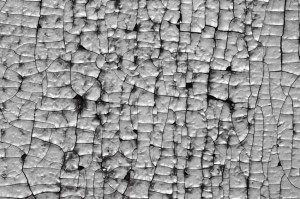Taken to Heart (Part 2)
By Asher Crispe: September 28, 2012: Category Decoding the Tradition, Inspirations
Feeling the Frame of the World
 We have dealt with the existential feeling of pulsating in and out of existence as the constant change that fuels constant emotion. From this feeling of ‘Being as Becoming’ wherein we are always transcending how we are–where the present is overcome by the future which in turn brings into being a new present–we can now turn our attention to the feeling of immanent Being. Immanence as that which is indwelling or operating within, addresses the domain of interiority. In this way, we hope to demonstrate how we establish a feeling for immanence just by sitting in the Sukkah.
We have dealt with the existential feeling of pulsating in and out of existence as the constant change that fuels constant emotion. From this feeling of ‘Being as Becoming’ wherein we are always transcending how we are–where the present is overcome by the future which in turn brings into being a new present–we can now turn our attention to the feeling of immanent Being. Immanence as that which is indwelling or operating within, addresses the domain of interiority. In this way, we hope to demonstrate how we establish a feeling for immanence just by sitting in the Sukkah.
Descending the rungs of the ladder that are the letters of the Tetragrammaton, we move from the Yud (which we addressed in the previous article) to the first Hei (sometimes referred to as the higher Hei of this Divine name). In order to comprehend the significance of this letter in our present discussion we have to first address the notion that of all of the twenty-two Hebrew letters, two in particular are likened in their form to the structure of a Sukkah: the Beit [ב] and the Hei [ה].
Of these, a Beit, which means Bayit or ‘house’ depicts three contiguous walls of a Sukkah suggesting that it is a kind of a stage. The fourth wall is open to the audience who must participate in the creative process. Since the entire Torah and the account to Creation in Genesis begins with an enlarged letter Beit in the word Bereshit (In the Beginning) it implies that the whole of the cosmos is a home–the Big Home. However, it is not a fixed home but rather an impermanent dwelling or a macrocosmic Sukkah.
The Hei is also representative of a Sukkah with the primary difference being that the third wall is detached from the other two. In essence the Hei is like a minimally kosher Sukkah with 2 and a half walls. The kabbalists relate that the Hei may be seen as a Dalet [ד] with joined horizontal and vertical lines forming an partial frame. In fact the name Dalet means a ‘door.’ A door is a liminal zone. With this the sages are teaching us that any context or measured transition is usually incomplete. The framer leaves something out of the picture which in turn keeps the frame open. So too, the physical Sukkah has permeable or semi-permeable walls. Rain can get in. We barely establish a border between the inside and the outside. While it serves as a spacial enclosure, it is far from hermetically sealed.
The detached unfinished wall of the incomplete outline of a building represents the situating of the Yud [י] inside the frame of the Dalet (door) [ד] to produce the Hei [ה]. The feeling of transcendence which involves exteriority (the above and beyond) is restated within. While the transcendent is not entirely reducible to the immanent, it does find some expression through it. In other words, we go within in order to go beyond. The highest heights can be discovered inside the immediacy of one’s own heart.
A great deal of early period Kabbalah reaching back to the times of the Talmud expresses this. One group of texts in particular, known as Hechalot literature (hechalot means ‘chambers’ or ‘palaces’) depicts these mystics exploring the Heavenly realm. Each room of the palace has different angelic gate keepers and passwords which are used to enter. Usually the keys involve the utterance or meditation on a Divine name. But where is the palace? Where are these rooms? The later mystical commentaries explain that the chambers are the chambers of one’s heart. Opening the inner recesses of the heart is a transcendence that happens from within. The Yud is the spark of the infinite (we could even call it the infinitesimal point) that helps to realize finitude–the paradox of the finite being of and from the infinite. Though the finite cannot completely enclose the infinite, it can allow the infinite or transcendent to be experienced via immanence if it remains open and broken.
As we related previously, the initial experience of the transcendent is through chochmah or intuition represented by the Yud of the Tetragrammaton. This Yud or intuition now ‘seeds’ the framework of understanding or binah as signified by the first letter Hei in the Divine name. In the symbolic order of things, we have to feel the Sukkah as the metacognitive architecture that allows our conscious mind to select certain thoughts to concentrate on. Mental frameworks contextualize the activity of our thinking, screening out and filtering much but not all of the non-essential noise that continues to operate in the background.
Part of the fuzziness of our thinking has to do with the Sukkah structure of the mind’s enveloping of a concept or idea. Through processes go through logic gates or doors and we register the transition, the problem is that the door frames and mental structures only provide a ‘weak measurement’ or minimal outline of their contents. There is a lot of cogitate leakage. Our ideas are porous. Artifacts of thought circulate in and out of any given situation. We get distracted. Our minds stray. We free associate. Consequently, any cognitive context is always on the verge of collapse.
The best we can do under such circumstances is to assay some of the chaotic motion and let things settle down a little bit if only for a brief time. Lingering in its mental frame or conceptual context, an idea may begin to situate itself. It may temporarily dwell within. Letting it settle is analogous to getting an inner feeling for it. While it is often remarked that Chassidic thought provides an overview as to how emotion is born out of states of consciousness that are themselves the results of certain cognitive processes, we can go a step further and assert in the name of the same body of teachings that there is an interstitial space that bridges mind and heart. It is an experience of this ‘between’ mind and heart that allows us to ‘think up how we feel’ but also to ‘get a feeling for what we are thinking.’
The performative of residing in the Sukkah (what formally initiates the act of dwelling) is the blessing le-shev b’sukkah meaning to ‘sit or dwell in the Sukkah.’ The first letters of this expression are Lamed and Beit which spell lev or ‘heart.’ To get a good feeling for the context (physically manifest as a Sukkah but mentally in play all the time as our metacognitive architecture) one has to take it to heart. ‘I’ need to settle in–to ‘live’ there by reflecting on the impermanence of its design and how it is speaking to the nature of existence as a whole and to the workings of the mind in particular.
Our Sukkah embodies more than an impermanent dwelling–be it a poorly staffed border patrol stretched out on the thin red line of our mental contexts or the extreme fragility of the frame of the world and the plasticity of the boundary conditions of the cosmos. It is also the dwelling of impermanence. This is to say that the indwelling or heartfelt sense of the transience of Creation transitions the Sukkah from something I identify as surrounding me into something which I have internalized.
 In the Zohar we find a beautiful illustration of this concept: when we examine the word Sukkah [סוכה] in Hebrew we find that the two middle letters are Kaf (20) and Vav (6) together equal 26–the sum of the Tetragrammaton [Yud (10)-Hei (5)-Vav (6)-Hei (5)]. These letters are hyper-literally the inside of the word. They dwell within. The first and last letters of Sukkah are spelled with a Samech (60) and Hei (5) which equals 65 or the name Adokai (the way the Tetragrammaton is pronounced). The transcendent dimension of Divinity (the Tetragrammaton) cannot be expressed directly but is internalized within the name Adokai which represents the plane of immanence within Divinity. More importantly, 65 also equals the word heichal (palace) which we made mention of above. Thus the palace is the heart that houses the indwelling of a transcendent dimension of reality. When we say ‘take it to heart’ the ‘it’ in this sentence should be related to the transcendent inexpressible aspect of Divinity. This is the seat of the existential emotions, the situating and setting of our feelings of immanence within our immanent feelings.
In the Zohar we find a beautiful illustration of this concept: when we examine the word Sukkah [סוכה] in Hebrew we find that the two middle letters are Kaf (20) and Vav (6) together equal 26–the sum of the Tetragrammaton [Yud (10)-Hei (5)-Vav (6)-Hei (5)]. These letters are hyper-literally the inside of the word. They dwell within. The first and last letters of Sukkah are spelled with a Samech (60) and Hei (5) which equals 65 or the name Adokai (the way the Tetragrammaton is pronounced). The transcendent dimension of Divinity (the Tetragrammaton) cannot be expressed directly but is internalized within the name Adokai which represents the plane of immanence within Divinity. More importantly, 65 also equals the word heichal (palace) which we made mention of above. Thus the palace is the heart that houses the indwelling of a transcendent dimension of reality. When we say ‘take it to heart’ the ‘it’ in this sentence should be related to the transcendent inexpressible aspect of Divinity. This is the seat of the existential emotions, the situating and setting of our feelings of immanence within our immanent feelings.
Living life for this festival in a home away from home, where the inside is held outside and where the outside penetrates the inside, gifts us with an understanding heart. Joy and celebration attend this expanding of our awareness–the feeling of the transcendent within the imminent.
From here our attention will shift to the lulav and the spatialization of emotion in Part Three.
http://www.interinclusion.org/inspirations/taken-to-heart-part-3/























;)
;)
;)
;)
;)
;)
;)
;)
;)
;)
